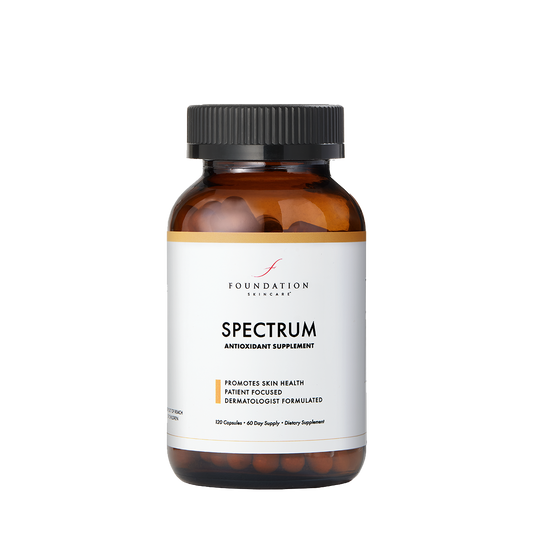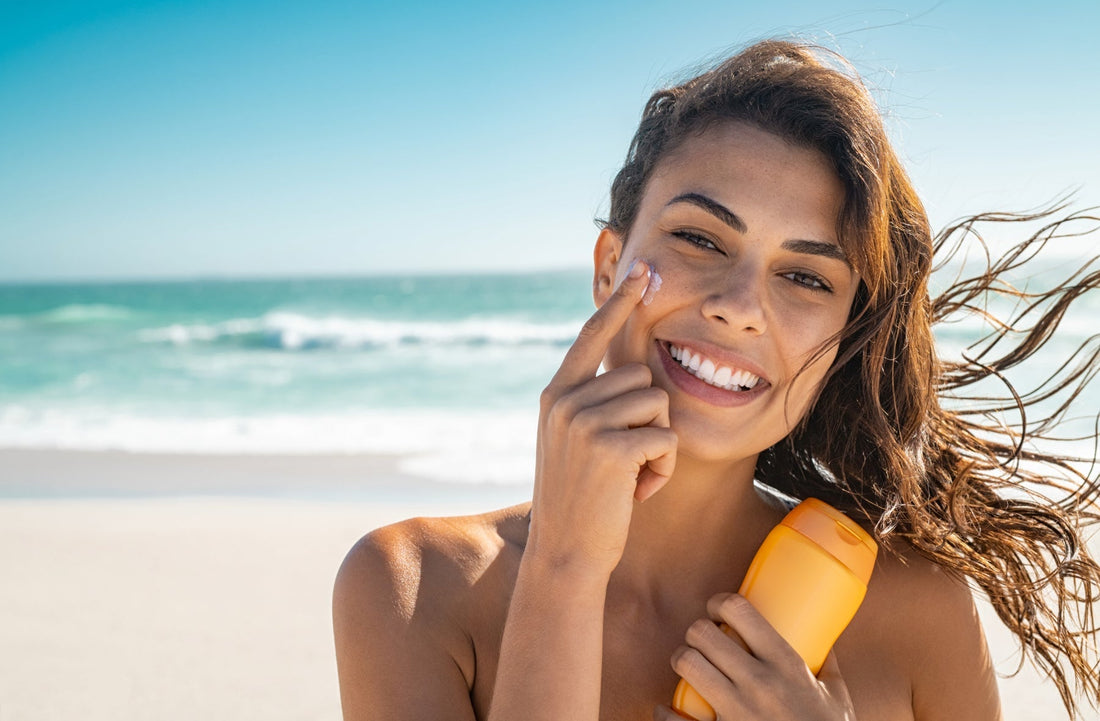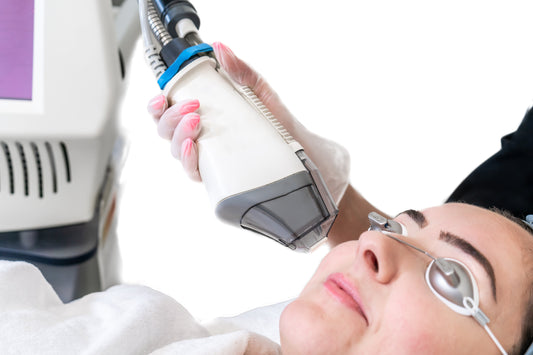Sunscreen is a crucial part of skincare, protecting your skin from harmful UV rays that can cause premature aging, skin cancer, and other sun-related damage.1 But with so many brands and types to choose from, narrowing it down can be overwhelming. To make sure you’re getting the best protection possible, it’s essential to understand several key factors when choosing a sunscreen. So in this article, we’ll guide you through some of the most important aspects to consider when selecting your sun protection.
Understanding SPF (Sun Protection Factor)
Sun Protection Factor (SPF) is a measure of how well a sunscreen protects against UVB rays, the type of radiation that primarily causes sunburn and contributes to skin cancer.2 SPF indicates how long you can stay in the sun without getting burned compared to if you weren’t wearing any sunscreen. For example, if you typically burn after 10 minutes in the sun, an SPF 30 sunscreen theoretically allows you to stay in the sun 30 times longer, or 300 minutes, without burning.3
However, SPF is not a linear scale. Higher SPF numbers do provide more protection, but the difference between SPF 30 and SPF 50 is not as dramatic as it might seem. SPF 30 blocks approximately 97% of UVB rays, while SPF 50 blocks around 98%. Therefore, it’s important to choose an SPF that matches your skin type, sun exposure, and activity level.4
For example, if you have fair skin and tend to burn more easily, you’ll want to choose the highest available SPF, and you may also need to wear protective clothing or a hat. Somebody who tends to tan in the sun will still need sunscreen, but may be able to get away with SPF 30. (We don’t recommend going any lower than 30.)
You should also be reapplying your sunscreen throughout the day even if you’re not sweating or getting in water. See your specific sunscreen for reapplication recommendations.
Broad-Spectrum Protection
While SPF measures UVB protection, “broad-spectrum” sunscreen provides protection against UVA rays as well.5 UVA rays penetrate deeper into the skin and are primarily responsible for aging, wrinkling, and long-term skin damage.2 Broad-spectrum sunscreens are formulated to protect against both types of rays, providing more comprehensive skin protection and reducing the risk of skin cancer.
In addition to looking for a broad-spectrum sunscreen, you can help protect and heal photo-damaged skin from the inside out with various types of supplements. Foundation’s Spectrum Antioxidant Supplement, for example, is a great addition to a broad spectrum sunscreen, as this dermatologist-formulated supplement helps protect the skin against sun damage and skin cancer from the inside out.

Spectrum Antioxidant Supplement
• Fortifies skin against environmental toxins
• Helps protect from UV rays & skin cancer
Water Resistance
Often, the times we need sun protection most involve water, whether that’s sweat, swimming, or just some other activity where your sunscreen is likely to be washed away. So, it’s important to choose a sunscreen that is water resistant, if you know it might get washed off. Water-resistant sunscreens are designed to maintain their SPF protection even when exposed to water or sweat.
Sunscreens are generally labeled as either “water-resistant” or “very water-resistant.”6 Water-resistant sunscreens must retain their SPF protection for at least 40 minutes in water, while very water-resistant ones are effective for 80 minutes.6 However, no sunscreen is entirely waterproof, so be sure to reapply your sunscreen after jumping into the water or sweating.
Active Ingredients
There are two main categories of active ingredients in sunscreen: chemical and physical (or mineral).
- Chemical Sunscreens: These absorb UV rays and convert them into heat, which is then released from the skin. Common chemical ingredients include avobenzone, octocrylene, octinoxate, and homosalate. They tend to be lighter and less greasy, and are often more water-resistant.7
- Physical (Mineral) Sunscreens: These contain minerals like zinc oxide or titanium dioxide that sit on top of the skin and reflect UV rays away. Mineral sunscreens are often recommended for sensitive skin because they are less likely to irritate, and they tend to be better for the water and environment.7
Skin Type Considerations
Different skin types have unique needs when it comes to sunscreen.
- Oily or Acne-Prone Skin: Opt for oil-free, non-comedogenic, mineral sunscreens that won’t clog pores or exacerbate acne.7
- Dry Skin: Look for sunscreens with hydrating ingredients like hyaluronic acid or ceramides. Cream-based sunscreens can provide additional moisture and help prevent dryness.
- Sensitive Skin: Choose mineral sunscreens with minimal irritants and no fragrances, which are less likely to cause reactions. Look for a sunscreen marked “sensitive skin.”
- Combination Skin: A balanced sunscreen that hydrates without being too greasy is ideal.
Additional Benefits
Some sunscreens come with added benefits beyond sun protection. These may include:
- Antioxidants: Topical ingredients like vitamin C, E, and green tea can provide additional protection against environmental damage and help to reduce inflammation.
- Anti-Aging Properties: Sunscreens with ingredients like hyaluronic acid can help in reducing signs of aging and promote skin regeneration.
- Tinted Formulas: Several sunscreens — especially mineral sunscreens — come in tinted formulas. Research shows these sunscreens provide better skin protection, and can also mask skin imperfections sort of like a light layer of makeup.8
Environmental Impact
It’s important to consider your sunscreen’s environmental impact, especially if you’re swimming in the ocean or a natural body of water. Some sunscreens contain chemical ingredients like oxybenzone and octinoxate, which have been shown to harm coral reefs and marine life.9 Also, aerosol or spray sunscreens have been shown to contribute to climate change.10 Be sure to look for “reef-safe” or “ocean-friendly” sunscreens. Most of these will be mineral sunscreens.
Application Tips
Proper application is key to maximizing your sunscreen’s effectiveness. Here’s what you should do:
- Read the instructions: The first step is to just read your sunscreen’s specific instructions and follow them. Instructions will vary by type of sunscreen.
- Apply Generously: If, for whatever reason, you can’t read the instructions (perhaps you’re using a French sunscreen), a good general rule is to use about one ounce (a shot glass full) to cover your entire body. For your face, a nickel-sized amount is typically sufficient.11
- Reapply Regularly: Reapply sunscreen every two hours, or more frequently if swimming or sweating.1
- Apply Before Sun Exposure: Apply sunscreen 15-30 minutes before going outside to allow it to fully absorb and provide optimal protection.1
- Don’t Forget Areas: Ensure you cover all exposed areas, including ears, neck, and the back of your hands. Also, remember to protect your lips with a lip balm containing SPF.
As you can see, picking the right sunscreen is a lot more than choosing the cutest bottle off the shelf. By understanding SPF, broad-spectrum protection, water resistance, active ingredients, and how your specific skin type reacts to certain sunscreens, you can find a product that provides the best protection for you. Be sure to consider using a reef-safe mineral sunscreen if you’re swimming in natural bodies of water, and always follow application instructions to ensure the sunscreen is actually working as intended.
Once you’re armed with the best sunscreen possible, you can protect your skin from the outside in. To help protect your skin from the inside out, consider adding in a supplement like Foundation’s Pigmentation Defense — which contains a blend of antioxidants, vitamins, and herbs to improve visible signs of skin discoloration through nutritional support — or Spectrum — which combines plant-based antioxidants and key vitamins to help clarify and protect skin against environmental toxins and the sun.
Find more tips and resources on maintaining healthy hair and skin in the FS Blog.
References:
-
https://www.urmc.rochester.edu/encyclopedia/content.aspx?contenttypeid=85&contentid=P01351
-
https://www.mdanderson.org/publications/focused-on-health/what-s-the-difference-between-uva-and-uvb-rays-.h15-1592991.html
-
https://www.fda.gov/about-fda/center-drug-evaluation-and-research-cder/sun-protection-factor-spf
-
https://sesamecare.com/blog/spf-strength-differences
-
https://mana.md/broad-spectrum-sunscreen/#
-
https://www.aad.org/public/everyday-care/sun-protection/shade-clothing-sunscreen/understand-sunscreen-labels
-
https://health.clevelandclinic.org/mineral-vs-chemical-sunscreen
-
https://www.health.harvard.edu/blog/tinted-sunscreens-benefits-beyond-an-attractive-glow-2020071320534
-
https://ocean.si.edu/ecosystems/coral-reefs/truth-about-corals-and-sunscreen
-
https://www.ncbi.nlm.nih.gov/pmc/articles/PMC6104653/
-
https://www.self.com/story/how-much-sunscreen-larger-body




